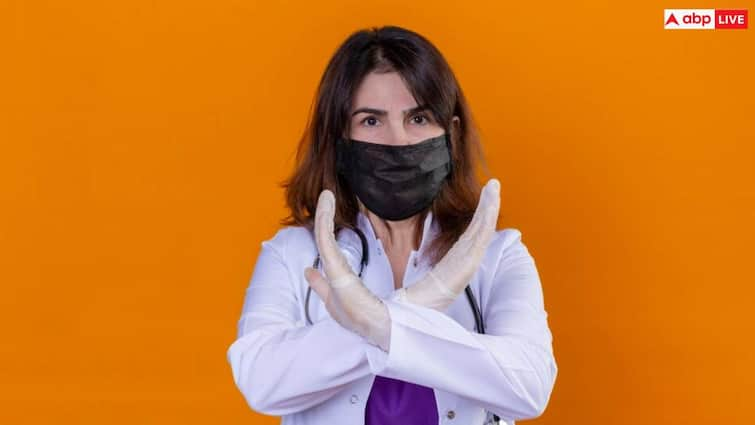Today, on behalf of the Union Health Ministry, the Union Home Minister and the Health Secretary held a meeting with all states regarding the safety of doctors and health workers, in which it was discussed to take immediate steps for the safety of doctors and health workers. health professionals. The Secretary, Ministry of Home Affairs and the Union Health Secretary today chaired a virtual meeting with the Chief Secretaries and DGPs of the states, in compliance with the Supreme Court order, to ensure that the National Health Mission is implemented by the State/UT Governments. After receiving the report of the Task Force (NTF), some fundamental steps have been taken to address the concerns of the doctors regarding their safety.
In today’s meeting, officials of State/UT Governments including Chief Secretaries and DPGs took steps to improve safety and provide a safe working environment to healthcare workers in government and private hospitals, medical colleges and other healthcare institutions taken by the respective governments.
Issues on which instructions were given in discussion with State Governments
For the safety of healthcare workers, 26 states and union territories (Andhra Pradesh, Arunachal Pradesh, Assam, Bihar, Chhattisgarh, Delhi, Goa, Gujarat, Haryana, Himachal Pradesh, Jharkhand, Karnataka, Kerala, Madhya Pradesh, Maharashtra, Manipur, Odisha, Puducherry, Punjab, Rajasthan, Tamil Nadu, Tripura, Telangana, Uttar Pradesh, Uttarakhand and West Bengal) have implemented existing state laws in a proper manner. States without such laws have been asked to enact necessary laws.
Creating awareness about safety of healthcare professionals by highlighting the provisions of the Indian Civil Code
Organize the appointment of chief security officers in hospitals and medical schools
Conduct police verification of contract/outsourced employees working in government hospitals. Conduct joint security audit in government district hospitals (DH) and medical colleges (MC) by the District Magistrate and Superintendent of Police along with Deans/Directors of DH and MC. Police outposts/stations are available on the premises of many major medical colleges/district hospitals and police patrolling is increased at night.
A sexual harassment and complaints committee should be set up and activated. Review of CCTV network and strengthen surveillance with additional CCTVs to cover hospital premises including dark areas, alleys etc. Many states have a control room where CCTV coverage is monitored and also stored in cloud. Review the lighting system in various parts of medical colleges, district hospitals and other health facilities. Helpline number 100/112 is operational in most states and widely used with good response times. Most states are considering expanding the 112 helpline to protect healthcare workers.
Regular exercises, such as fire drills, to manage safety risks and incidents with healthcare workers in hospitals. Auditing spaces/rooms in hospitals and medical colleges to ensure that unused rooms/spaces are not misused by unruly elements.
To regulate the number of hours of duty of resident doctors. To provide security escort to women doctors, SRs, etc. from hostel to place of work during night duty hours in certain states,
States are urged to ensure that instructions given in high-volume hospitals include
Installation of video surveillance cameras in blind spots.
Integration with the 112 helpline for health workers.
Access control for large hospitals.
Partnership having revived its status under the Indian Code of Justice (BNS).
The Union Health Secretary encouraged states to come up with innovative ideas and highlighted immediate measures that can be considered to improve safety and provide a safe working environment for healthcare workers.
Joint security audit with District Collector and DSP as well as DH/MC management to examine any deficiencies in existing infrastructure and security arrangements and take corrective measures.
Conduct regular security checks of all security personnel and other service personnel employed.
Provision of security personnel by the DGR/State Security Corporation.
Control rooms, especially in larger DH/MCs, have duty rosters of personnel who regularly monitor CCTV and store the data securely.
Respond to distress calls via the control room.
Regularly conduct mock safety drills, such as fire safety drills.
training to strengthen the capacities of the security personnel employed; in many establishments, they are found to be weak in carrying out their duties.
Patient facilitators/trolley men/MTS are required to transport patients on wheelchairs/stretchers in large hospitals, to reduce the number of patients’ family members and reduce the burden and stress on security and other healthcare professionals.
Capacity building and training of physicians and other health workers in bereavement protocols, particularly in emergency departments.
Institutionalize the safety and security committee and involve senior/junior residents and students for continuous situation monitoring and emergency response preparedness.
“Regular security patrols” at night in all hospital and medical school premises.
Discover the health tools below-
Calculate your body mass index (BMI)
